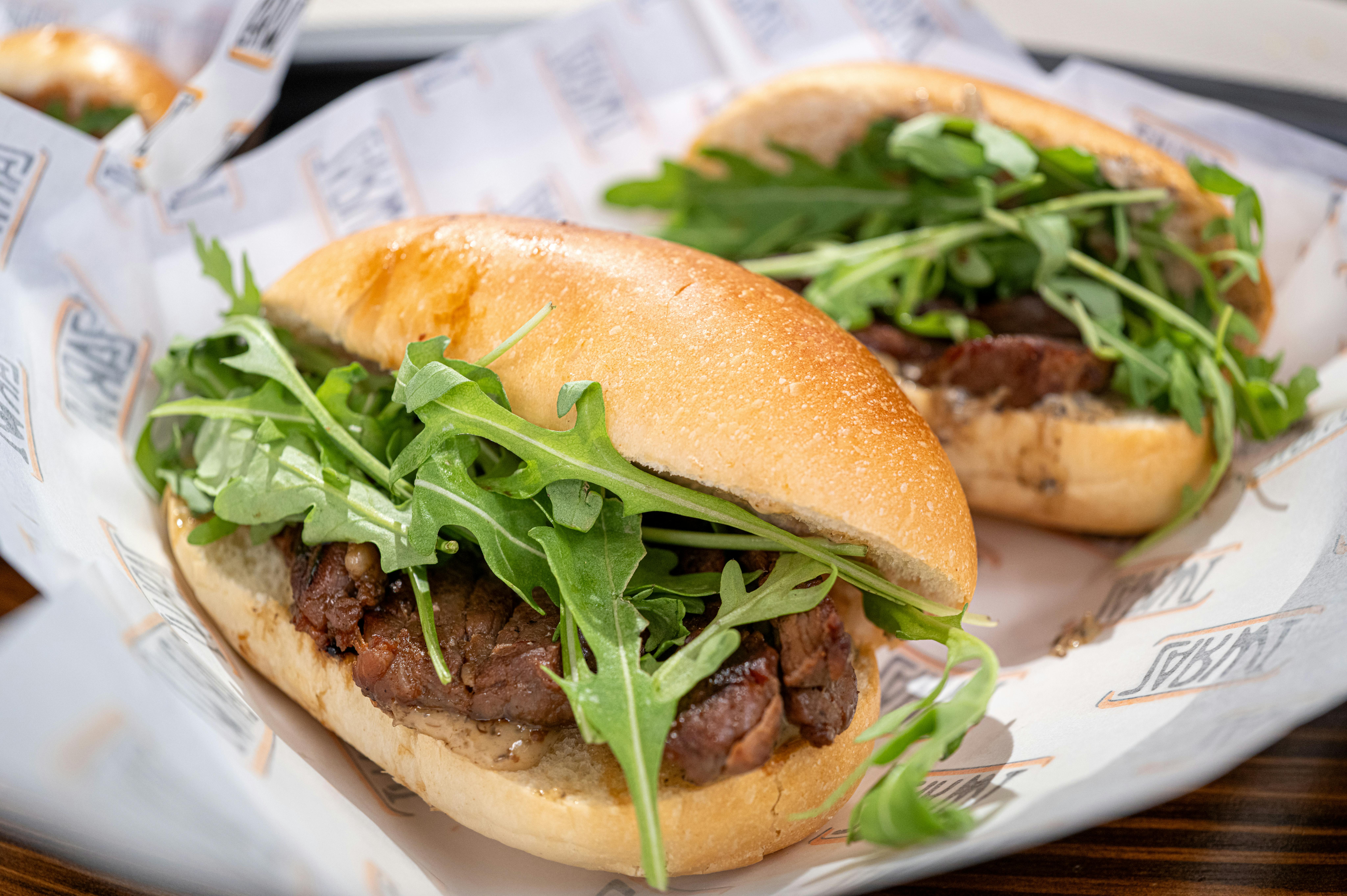If you’ve ever found yourself pondering over the best way to keep your meat fresh and delicious, you’re certainly not alone. The task of properly storing meat can sometimes feel like a mystery waiting to be unraveled. But fear not, dear reader, for this article is here to guide you through the ins and outs of meat storage. From refrigeration techniques to packaging tips, we’ve got you covered on all the essentials for ensuring your meat stays at its best. So, without further ado, let’s delve into the world of proper meat storage and discover the secrets to maintaining its quality and flavor.

Storing Fresh Meat
Temperature
When it comes to storing fresh meat, temperature plays a crucial role in maintaining its quality and preventing the growth of harmful bacteria. The ideal temperature for storing fresh meat is between 32°F and 40°F (0°C and 4°C). It is important to ensure that your refrigerator is set to the appropriate temperature to keep the meat fresh for a longer period.
Packaging
Proper packaging is essential for storing fresh meat. It is recommended to leave the meat in its original packaging until you are ready to use it. The packaging is designed to provide a protective barrier and helps maintain the meat’s freshness. However, if the original packaging is damaged or doesn’t provide adequate protection, you can transfer the meat to airtight containers or resealable plastic bags. This will prevent any contamination and keep the meat safe to consume.
Labeling
To keep track of your fresh meat inventory, it is important to label each package with its contents and the date of purchase. This practice will help you easily identify different cuts of meat and ensure that you consume them within a reasonable time frame. Labeling will also prevent any confusion and avoid the risk of consuming expired meat.
Placement in the Refrigerator
Proper placement of fresh meat in the refrigerator is crucial for maintaining its quality and preventing any cross-contamination. It is advised to store fresh meat on the bottom shelf of the refrigerator to prevent any potential drippings from contaminating other food items. Additionally, placing the meat in a tray or on a plate can further contain any potential liquids and make cleaning easier.
Storing Cooked Meat
Cooling Process
When it comes to storing cooked meat, the cooling process is of utmost importance. It is essential to cool the meat quickly and properly to minimize the risk of bacterial growth. After cooking, allow the meat to cool at room temperature for no more than 2 hours. Then, transfer it to the refrigerator promptly to continue the cooling process.
Packaging
Similar to storing fresh meat, cooked meat should also be properly packaged to maintain its quality and prevent contamination. Once the cooked meat has cooled down, transfer it to airtight containers or resealable plastic bags. This will help preserve its flavor and prevent any potential odors from transferring to other foods in the refrigerator.
Refrigeration
After packaging the cooked meat, place it in the refrigerator at a temperature below 40°F (4°C). It is recommended to consume cooked meat within 3 to 4 days of refrigeration to ensure its freshness and safety. If you are unsure about the quality or safety of the cooked meat, trust your senses and discard it if it appears or smells spoiled.
Freezing
If you have excess cooked meat that you won’t be able to consume within the recommended timeframe, freezing is a great option to extend its shelf life. To freeze cooked meat, package it in airtight containers or freezer bags and label them with the date. Proper packaging will prevent freezer burn and maintain the meat’s quality. Cooked meat can be safely stored in the freezer for up to 3 to 4 months.

Storing Frozen Meat
Freezer Temperature
When storing frozen meat, it is important to set your freezer temperature to 0°F (-18°C) or below. A consistently low temperature is crucial for maintaining the quality and safety of frozen meat. Regularly check the temperature of your freezer to ensure it remains at the optimal level.
Packaging
Proper packaging is a key factor in storing frozen meat. Ensure that the packaging is airtight and provides a strong barrier against moisture and air. This will prevent freezer burn and protect the meat from developing an unpleasant taste or texture. Vacuum-sealed bags or freezer-safe containers are great options for storing frozen meat.
Labeling
To easily identify the type of frozen meat and its storage duration, it is important to label each package with its contents and the freezing date. This will help you keep track of the meat in your freezer and prevent any confusion. It is recommended to rotate your frozen meat supply and consume the oldest packages first to avoid any wastage.
Thawing Process
When it comes to thawing frozen meat, it is essential to do it safely to prevent any bacterial growth. The safest method for thawing frozen meat is to transfer it from the freezer to the refrigerator and allow it to thaw slowly in a controlled environment. This method ensures a gradual thaw and minimizes the risk of bacterial growth. If you are short on time, you can also use the microwave or cold water thawing methods, but always follow the manufacturer’s instructions and ensure the meat is properly cooked afterward.
Storing Cured or Dried Meat
Temperature and Humidity
The storage conditions for cured or dried meat differ from other types of meat. Cured or dried meat is best stored at a cool room temperature, preferably between 50°F and 70°F (10°C and 21°C). It is important to keep the humidity levels low to prevent the growth of mold or other harmful microorganisms. A dry and well-ventilated environment is ideal for maintaining the quality of cured or dried meat.
Packaging
When storing cured or dried meat, it is important to ensure proper packaging to prevent exposure to air and moisture. Place the meat in airtight containers or vacuum-sealed bags to maintain its flavor and texture. If the cured or dried meat has a protective layer such as wax or a natural casing, it is important to leave it intact to provide an additional layer of protection.
Storage Duration
The length of time that cured or dried meat can be safely stored varies depending on the specific type and preparation method. It is important to refer to the manufacturer’s instructions or consult a trusted source for specific storage duration guidelines. However, in general, properly stored cured or dried meat can last for several months to a year. Regularly check for any signs of spoilage or changes in texture before consuming.

Storing Ground Meat
Packaging
Ground meat should be properly packaged to maintain its quality and prevent contamination. If purchasing ground meat from a store, it is recommended to leave it in its original packaging until you are ready to use it. If you need to store ground meat for a longer period, consider dividing it into smaller portions and packaging them in airtight containers or freezer bags.
Refrigeration
Fresh ground meat should be refrigerated at a temperature below 40°F (4°C) and consumed within 1 to 2 days. It is important to store ground meat on the bottom shelf of the refrigerator to minimize the risk of cross-contamination. If the ground meat has been previously cooked, follow the guidelines for storing cooked meat.
Freezing
To extend the shelf life of ground meat, freezing is a great option. Package the ground meat in airtight containers or freezer bags, ensuring that all air is removed. Ground meat can be safely stored in the freezer for up to 3 to 4 months. Remember to label each package with the freezing date for easy identification.
Thawing
When thawing frozen ground meat, it is recommended to use the refrigerator or the microwave, using the defrost setting. Thawing ground meat at room temperature is not recommended, as it increases the risk of bacterial growth. Once thawed, use the ground meat promptly and ensure it is properly cooked before consuming.
Storing Deli Meats
Packaging
Deli meats should be stored in their original packaging until you are ready to use them. The packaging is designed to provide proper protection and maintain the freshness of deli meats. If the original packaging is damaged or doesn’t provide adequate protection, you can transfer the deli meats to airtight containers or resealable plastic bags.
Refrigeration
To keep deli meats fresh and safe for consumption, it is important to refrigerate them promptly. Deli meats should be stored at a temperature below 40°F (4°C). It is recommended to use the deli meats within 3 to 5 days of opening the package. Always check for any signs of spoilage, such as off odors or slimy texture, before consuming deli meats.
Freezing
If you have a large quantity of deli meats that you won’t be able to consume within the recommended timeframe, you can freeze them to extend their shelf life. Package the deli meats in airtight containers or freezer bags, removing as much air as possible. Deli meats can be safely stored in the freezer for up to 2 to 3 months. Thaw and use the deli meats according to the proper thawing guidelines mentioned earlier.
Tips for Storage
- Keep the deli meats away from raw meats to prevent cross-contamination.
- Avoid stacking heavy items on top of deli meat packages to prevent them from being squashed.
- Regularly check the temperature of your refrigerator to ensure it remains within the safe range for storing deli meats.
Storing Vacuum-Sealed Meat
Storage Temperature
Vacuum-sealed meat should be stored at a temperature below 40°F (4°C). It is crucial to maintain a consistently low temperature to preserve the quality and safety of vacuum-sealed meat. Ensure that your refrigerator or freezer is properly set to the recommended temperature.
Storage Duration
When stored in a vacuum-sealed package, meat can be safely stored in the refrigerator for up to 1 to 2 weeks. For longer storage, it is advisable to freeze the vacuum-sealed meat. Vacuum-sealed meat can be safely stored in the freezer for extended periods, ranging from 6 to 12 months, depending on the specific type of meat.
Opening and Re-Sealing
When opening a vacuum-sealed package, it is important to handle the meat with clean hands and utensils to prevent any contamination. After removing the desired portion, promptly re-seal the package using a vacuum sealer or by manually sealing it with airtight clips or adhesive tape. Properly re-sealing the package will maintain the quality and prevent any potential exposure to air or moisture.
Storing Meats with Bones
Packaging
Meats with bones should be properly packaged to prevent any potential punctures or damage to the packaging. Ensure that the bones are properly covered to avoid any contact with air and moisture. For smaller cuts of meat with bones, you can use airtight containers or freezer bags. For larger cuts or whole pieces, consider wrapping them in plastic wrap and then placing them in a sturdy freezer bag.
Storage Method
When storing meats with bones, it is recommended to store them in the freezer. The low temperatures in the freezer will help maintain the quality of meat and bones for a longer period. Remember to label each package with its contents and the freezing date for easy identification and rotation.
Tips for Long-Term Storage
- Consider wrapping the bones with wax paper or plastic wrap before packaging to further protect them from potential punctures.
- Store the meats with bones in an organized manner to avoid any accidental injuries when retrieving them from the freezer.
- Regularly check the temperature of your freezer to ensure it remains at the recommended level for storing meat.
Storing Leftover Meat
Packaging
When storing leftover meat, it is crucial to package it promptly to prevent any potential contamination. Transfer the leftover meat to airtight containers or resealable plastic bags. It is important to ensure that the packaging is airtight to maintain the quality and prevent any odors from transferring to other foods in the refrigerator or freezer.
Refrigeration
Refrigerate leftover meat within 2 hours of cooking to prevent the growth of harmful bacteria. Leftover meat should be stored at a temperature below 40°F (4°C) and consumed within 3 to 4 days. Always check for any signs of spoilage, such as an off odor or slimy texture, before consuming leftover meat.
Freezing
If you have a larger quantity of leftover meat that you won’t be able to consume within a few days, freezing is a great option. Package the leftover meat in airtight containers or freezer bags, ensuring all air is removed. Leftover meat can be safely stored in the freezer for up to 2 to 3 months. Thaw and reheat the leftover meat according to the proper guidelines mentioned earlier.
Food Safety Guidelines
- Ensure that the leftover meat has been properly cooked and handled before storing.
- Always refrigerate or freeze leftover meat promptly to prevent bacterial growth.
- Never leave leftover meat at room temperature for more than 2 hours.
- Follow proper hygiene practices when handling and preparing leftover meat to minimize the risk of cross-contamination.
Storing Exotic Meats
Storage Temperature
The storage temperature for exotic meats may vary depending on the specific type. It is important to consult the specific guidelines for each exotic meat you are storing. In general, exotic meats should be stored at a temperature below 40°F (4°C) to maintain their quality and safety.
Packaging
Exotic meats should be packaged in airtight containers or freezer bags to prevent any exposure to air and moisture. Proper packaging will help maintain the flavor and texture of exotic meats. Ensure that the packaging is labeled with the type of meat and the date of storage for easy identification.
Additional Considerations
- Some exotic meats may have specific storage requirements due to their unique properties. It is important to research and understand these requirements before storing exotic meats.
- If you are unsure about the storage guidelines for a specific exotic meat, it is recommended to consult a reputable source or the seller you purchased the meat from.
- Regularly check the condition of stored exotic meats for any signs of spoilage or changes in texture before consuming. Trust your senses and discard any meat that appears or smells spoiled.
In conclusion, properly storing meat is essential for maintaining its quality, freshness, and safety. By following these guidelines for storing fresh meat, cooked meat, frozen meat, cured or dried meat, ground meat, deli meats, vacuum-sealed meat, meats with bones, leftover meat, and exotic meats, you can ensure that your meat stays in optimal condition for longer periods. Remember to pay attention to temperature, packaging, labeling, and proper storage methods to keep your meat fresh and safe to consume.


